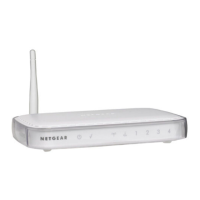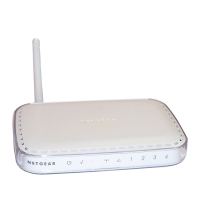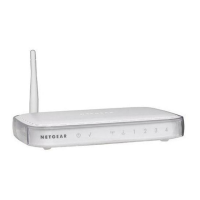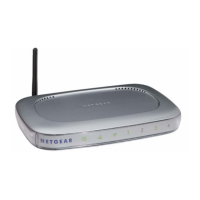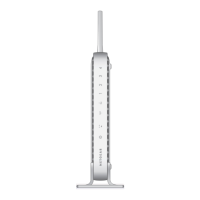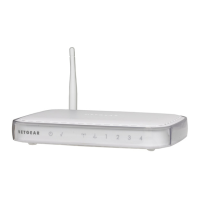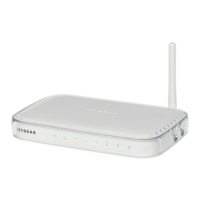Reference Manual for Cable/DSL Wireless Router WGR614
2-6 Connecting the Router to the Internet
e. Now, turn on your computer. If software usually logs you in to your Internet connection,
do not run that software or cancel it if it starts automatically.
f. Verify the following:
When you turn the router on, the power light goes on.
The router’s local LAN lights are lit for any computers that are connected to it.
The router’s Internet light is lit, indicating a link has been established to the cable
or DSL modem.
Note: For wireless placement and range guidelines, and wireless configuration
instructions, please see
Chapter 3, “Wireless Configuration.”
2. Log in to the router.
Note: To connect to the router, your computer needs to be configured to obtain an IP address
automatically via
DHCP. If you need instructions on how to do this, please refer to
Appendix C, “Preparing Your Network.
a. Connect to the router by typing http://192.168.0.1 in the address field of Internet Explorer
or Netscape® Navigator.
Figure 2-4: Log in to the router
b. For security reasons, the router has its own user name and password. When prompted,
enter
admin for the router user name and password for the router password, both in lower
case letters.
Note: The router user name and password are not the same as any user name or password
you may use to log in to your Internet connection.
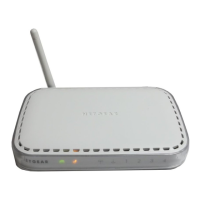
